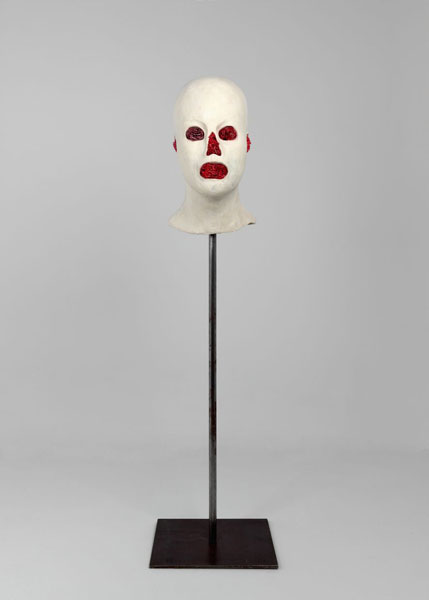One way, one ticket
Men and women currently maintain an elusive relationship with the idea of death. It is omnipresent in the media, but we generally consume it as a virtual simulacrum not connected with the pleasurable flow of our daily life. Immersed in a visual culture which promotes a plastic-wrapped longevity, unconsciously we increasingly defer our inevitable encounter with the Fates. The ancients knew considerably more about death than we do. In fact, one could say that there was a process of learning about death, an indispensable condition for a proper understanding of life and those who dwell in it, the living. Contemporary societies, however, have confined death to the cemeteries and left it in the hands of funeral parlour employees. Yet it can be said that we are witnessing a kind of return of the theme of death, which can be seen in contemporary art, literature, films, photography and television drama, and in debates about subjects that worry contemporary men and women, such as euthanasia or the new science and its obsession with the achievement of longevity. A dialogue with death has been a consubstantial part of the activity of art since its most remote origins. Art has been an important vehicle for dialogue between life and death ever since the appearance of the first prehistoric pictures. Art has formed a key part of various funerary rituals over the ages; but also the activity of art, the production of images by human beings, is essentially a combat against the perishability of life and a necessary element in the survival of society through the ages. It is probably through images that living people can most easily attain a mental understanding of the mystery of death. The image takes the place of the empty space, the disappearance of a loved one or of a cultural activity. In every image there is a contradiction: a thread swinging between absence and presence. Our modernity has experienced historical moments in which death has been displayed in the arts (Romanticism, Symbolism, Expressionism, Surrealism) with special emphasis, acting as a maleficent counterpoint, a mirror in which the reflection of the achievements of the Age of Enlightenment is distorted. The wars that assailed the twentieth century converted death into a huge orgy of blood and fire, an immense, grotesque danse macabre which trampled on humanity’s dreams of progress once again. We are now consuming more pictures connected with violent death than ever before. Death creeps into the daily papers and the television news programmes, it circulates in all its crudeness in websites in Internet, creating a kind of new pornography of horror and death. As a result, we are witnessing a mutation in the way the viewer sees, a kind of numbing. Overwhelmed as we now are by the increasingly stereotyped images of death purveyed by the media, it seems that we are unconsciously anaesthetizing our eyes as a strategy for inhabiting a world that is turning our lives and perceptions into a virtual simulacrum, a world which is becoming more and more like a videogame. In the territory of the video console we use the control pad to deal out death. Death no longer matters now that one has only to press a button in order to rise again from the ruins. It is precisely the reaction against this process of the numbing of the way we see that has led many contemporary artists to rescue the theme of death from the limbo of commonplace.



